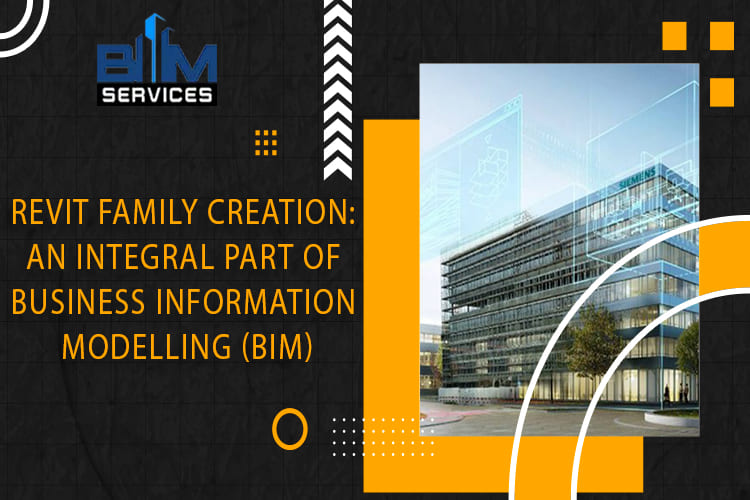REVIT FAMILY CREATION: AN INTEGRAL PART OF BUSINESS INFORMATION MODELLING (BIM)

WHAT IS REVIT AND BIM: ARE THEY THE SAME THING?
BIM or building information modeling is the way in which the physical and functional features of the buildings in question in a 3D database, which is created via the information model that depicts the design of the building. It also comprises of the management of the digital illustrations. It consists of files that can be extracted, exchanged and networked, to take decisions regarding building the steps towards building other assets. The software is mainly used by professionals, business agencies, government organizers, etc.
In the industry, BIM is to CAD as Revit is to AutoCAD. It is usually understood, rather misunderstood by many that BIM is nothing but a piece of software and that Revit is BIM. But this is completely wrong. Because Revit is not BIM, it is a part or a tool of BIM like many other BIM tools like AutoCAD MEP, ArchiCAD, Microstation and even Navisworks.
BIM enables a 3D, dynamic and actual-time software for modeling that helps in increasing productivity and drawing consistency and error elimination. But Revit is different, with a powerful database, developed by Autodesk. Revit can contain information of various projects and might suggest re-edits also along the way at various stages of construction. Revit typically uses. RVT files for storing 3D BIM models.
What is Revit Family Creation?
As suggested earlier, files in Revit are stored in.RVT files. But every construction model needs 3D objects like walls, door, windows, roofs etc. In this scenario, rather than going back every time to create the same objects that are repetitive in almost every construction, families or groups of the objects are created which can be inserted into the model with ease. These files are saved as.RFA files and not.RVT files. These.RFA files are then imported into RVT database when needed and used accordingly. These families are single model database file elements that can be modified depending on what kind of family it is. Revit families are of two main types: parametric and non-parametric.
Parametric Revit Family: Parametric families are the elements that can be modified in dimensions and parts, according to the model requirements. The minimum level of detailing (LOD) is 350, LOD 400 is used for this generally.
Non-parametric Revit Family: Non – parametric Revit families are the elements, which have been created in the Revit database and cannot be tampered with, later in case of any demands in such situations.
Technically, there are three types of Revit Families:
- System Families
- Loadable Families
- In-place Families
Most of the elements that are created in projects are system families or loadable families. Nested and shared families can be created by combining loadable files. Custom elements are created using In-place families.
System Families: System families are used to creating basic elements required for assemblage in a construction site. As for example walls, roofs, floors, ducts, pipes etc. System settings have types for levels, grids, drawing sheets and viewports. These files are established in advance in Revit. These are not downloaded into the projects from external files nor are these files uploaded into locations that are external to the project.
Loadable Families: Loadable families are used to creating the following elements –
- Windows, doors, casework, fixtures, planting, furniture etc…; the building elements that would be purchased.
- Boilers, water heaters, air handlers, plumbing fixtures etc; the building elements that would need purchasing, delivery and installation.
- Symbols, tile blocks etc, elements that are footnote components and are routinely customized.
Loadable families are the ones that are mostly used because they can be highly customized according to preferences and thus are mostly created too and used. These files are created externally, in RFA files and are then imported or loaded into their projects according to needs. Because loadable families contain various types, type catalogs can also be created and used for proper organization of use and the only families that are needed for a particular project can be then loaded into the project.
In- place Families: These families are the unique ones that can be created when there is a specific need for a customized product for a project. When created in in-place geometry, it automatically refers to project geometries, resizing itself immediately according to the changes in the geometry. When creating an In-place family in Revit, there is an automatic family in place for it that contains only a single family type.
Thus, in this way, Revit family editor users develop efficient families which then go through optimizations for complementing Revit modeling projects. With this assistance, Revit modeling projects take considerable less time and with more precision. Thus, Revit family creation has become an integral factor in Revit modeling projects and in turn for Building Information Modeling (BIM).